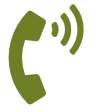If you think that setting up the loyalty program is enough for your business to grow, then you are wrong at this point?
Loyalty programs alone can build your reputation and can help you drive your business. The main challenging task with the launch of the loyalty program is to measure its success.
Have you ever wondered how you will measure the success of the Loyalty Program? For this, you need first to think about which loyalty program suits your business. You will find numerous loyalty programs, but I scare you not to follow the one that is not meant for your business. The best loyalty program can support rehash business and help consumer loyalty.
The first thing to keep in mind with measuring the loyalty program’s success is to begin considering ROI estimations. Regardless of the possibility that you’ve quite recently revealed your plan, it’s never too soon or too late to contemplate your objectives and benchmarks.
As a best practice, you ought to start the work out of your loyalty program based on quantifiable goals and structure it to be ROI positive from the onset. In today’s mobile computing world, clients have got more prominent access to contending administrations and expanded desires to benefit clients.
Let us read about loyalty program success.
Organizations can no longer rely on concrete, long haul clients without investing additional exertion. Loyalty projects are an incredible stride in this heading, exceptionally when actualized with a long haul procedure and instruments for examining client information.
Currently, what ought to be conceivable to scale the success of your Online B2B Loyalty Program? The snappy answer that strikes your mind is ‘Automation.’ Yes, as we start building the B2B Loyalty Program, it becomes extraordinarily crucial to robotize the aggregate work preparation.
B2B Loyalty Programs help finish new business leads, ensuring brand progression works out, interfacing with new business firms, accomplices, traders, delegates, customers, and associates. It is the critical clarification for the accomplishment and outstanding advancement of various business firms.
Let’s have a look at numbers!
According to a recent survey, US family units are included in 21.9 loyalty programs, but still, just dynamic take part in 9.5 of them. Every year organizations apportion about $48 billion towards loyalty programs, out of which clients ever recover only 66%.
That may sound extraordinary from an organization’s point of view, yet it’s imaginable demonstrative of low client engagement. Someone rightly said that the loyalty program’s effect depends directly on the relation between the client and the organization.
One of the statistical reports showed 25-100% in the company’s profit, with just a 5% increase in the customer retention program.
How to measure Loyalty Program Success?
There could be many ways that will help you measure the success of your program. But, the best among those have been described below:
Retrieval rate:
A powerful program drives client dedication by setting up a stable relationship between the positive and negative vibes while getting a reward. In this manner, a high reclamation rate can uncover precisely how loyal your program clients are.
If clients are acquiring points, however, never spending them, they may not be named a faithful client. A retrieval rate under 20% is generally a pointer that your program isn’t performing how you might want.
Retention Rate:
The general purpose of such programs is to expand the number of clients who remain with your business. Measuring the loyalty program status of those not involved is one of the ideal approaches to figure out your loyalty program’s strength.
Customer Satisfaction Level:
Customer satisfaction is to know how happy your client is. And, especially how often the buyer makes recommendations to their peers and friends. The more comfortable the client is, the more he/she is likely to share your products with others.
Client lifetime esteem is an extraordinary measure of client loyalty since it is affected intensely by how regularly a client shows interest and how they remain a client on the off chance that a client is frequently obtaining. For quite a while, they can be steadfast.
Broad Metrics:
Likewise, with any activity you actualize, there should be an approach to gauge your marketing effectiveness. Set up different measurements with the abrogating point that client loyalty projects should build client joy and maintenance.
Negative Churn:
Negative churn is the rate that quantifies when clients show interest in your business that eventually increases sales. When loyal clients are regularly returning, they spend more on a single visit. Customers taking part in more occasions measure your program’s success.
The Takeaway:
Loyalty procedures are a universal advertising strategy that every company adopts these days. Loyalty programs inversely affect target and spectator clients’ dependability and deals. Selective prizes offer a way to ease negative observer impacts without influencing targets.














